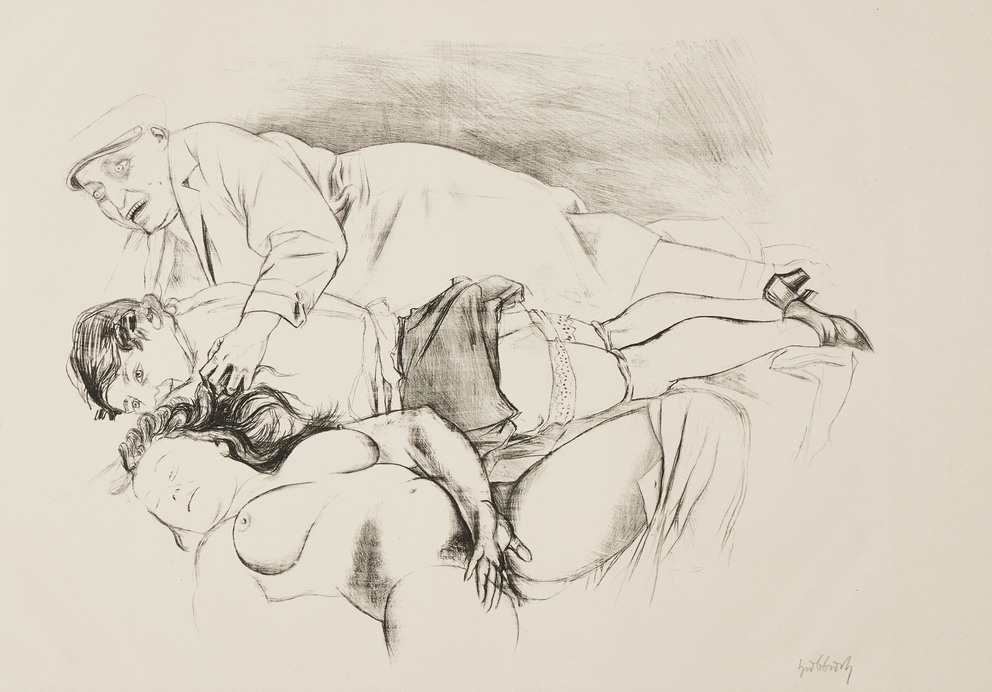Does this rendering depict male obsession or does it approach female desire? When Karl Hubbuch (1891–1979) placed two women in different stages of undress next to one another and positioned a fully dressed man alongside them in his brilliantly drawn and cleverly composed lithograph
Ménage à trois, his explicit depiction of erotic poses and nudity catered to the visual habits of an audience informed by the traditions of the late 19th and early 20th centuries that were accompanied by breaks with taboos. And yet, Hubbuch broke with these traditions in a skillful and psychologically ingenious manner by delicately rearranging small details and presenting them in a new context: In the foreground, we see a reclining female nude, her legs slightly spread apart, a cloth lightly draped around her, with full, soft breasts and one hand between her thighs – the only difference to similar depictions being that her hand is turned outward in an almost defensive gesture. Thus, the work does not depict female masturbation, which represented a highly sought-after pictorial subject amongst collectors of erotic images. Nestled against this figure is a second female, lying on her front with a slightly hollow back, her legs stretched out and pressed together, wearing a blouse, skirt and shoes. The skirt, however, is cheekily hiked up all the way to her bottom, seductively revealing her garter belt. The eponymous
Ménage à trois is completed by a male figure, fully dressed with a coat and cap, clutching the shoulder of the female figure in the middle with an enraptured and tortured expression. It is the only figure to engage with the beholder by directly looking at them. Grotesque, mysterious and strange, like many works by this exponent of New Objectivity, this lithograph epitomizes an oeuvre which met with disapproval from the National Socialist regime.
MH, 2021




